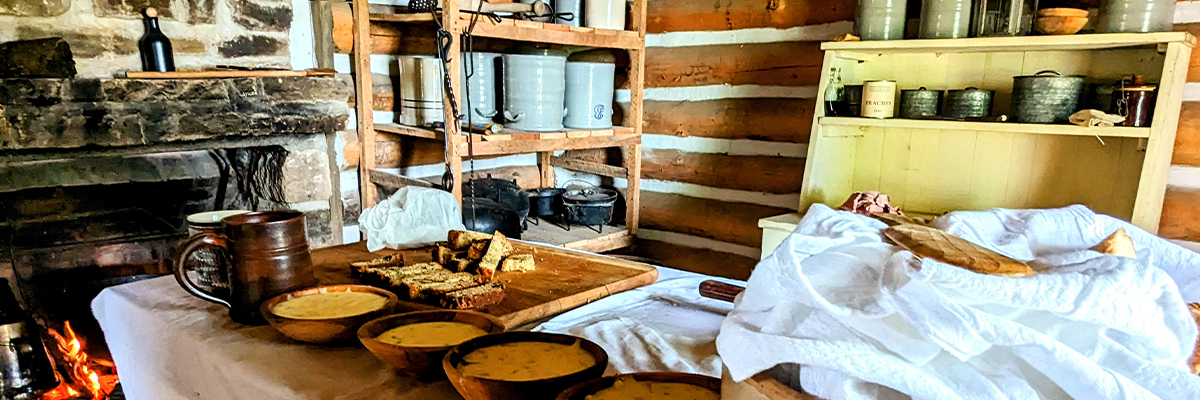
Fort Gibson Historic Site
Fort Gibson Historic Site on Facebook Fort Gibson Historic Site on Instagram Fort Gibson Historic Site on YouTube
Fort Gibson Historic Site
803 North Garrison Avenue
Fort Gibson, OK 74434
918-478-4088
fortgibson@history.ok.gov
Director: Jennifer Frazee
Historical Interpreter: Seth Goff
Construction/Maintenance: Rory Montgomery
Hours
Tuesday through Saturday
10 a.m. to 4:30 p.m.
| Adults | $7 |
| Seniors (62+) | $5 |
| Students (6–18) | $4 |
| Family (up to 6 people) | $18 |
| Group Rate (10+) | $5/person |
| OHS Members, Children (under 6), Veterans and Active Military (with ID) | Free |


Fort Gibson Historic Site will be closed on Tuesday, May 6, and Thursday, May 8. On Friday, May 9, the site will only be open to registered school groups.
Visit Fort Gibson
Visitors can view original buildings from the 1840s–70s and a reconstruction of the early log fort and the stockade. Exhibits about the fort’s history can be found in the commissary and in the new visitor center located in the hospital building. Fort Gibson Historic Site hosts living history events, Bake Days using the historic bakehouse, and educational programs throughout the year.
The site features a renovated historic hospital and a log stockade reconstructed under the Works Progress Administration in 1937. The stockade underwent extensive restoration in 2013 and reopened in 2016.
Fort Gibson is a National Historic Landmark and is listed in the National Register of Historic Places.
The History of Fort Gibson
Fort Gibson served a pivotal role in the political, social, and economic upheaval that marked the westward expansion of the United States.
Built at the critical crossroads of the Three Forks where the Arkansas, Verdigris, and Grand Rivers converge south of the Ozark Plateau, Fort Gibson was key to river navigation. It also served as an outpost on the Texas Road connecting settled Missouri with the new country of Mexico after independence from Spain in 1820.
Fort Gibson was established in 1824 to keep the peace between the Osage and the Cherokee. It figured prominently in the Indian removals and was home to many of our nation’s leaders during the 1840s and 1850s. Fort Gibson served as a starting point for several military expeditions that explored the West. It was occupied through most of the Indian removal period, but then abandoned in 1857. The post was reactivated during the Civil War. It was renamed Fort Blunt and served as the Union headquarters in Indian Territory. The army stayed through the Reconstruction and Indian Wars periods, combating the problem of outlaws and squatters.
Abandoned in 1890, the fort was later the headquarters of the Dawes Commission for their work enrolling members of the Five Tribes. At Fort Gibson, the commission members focused their attention on Cherokee Freedmen.
Explore More
Read more about Fort Gibson in The Encyclopedia of Oklahoma History and Culture
View “Feeding An Army,” which takes a look at the Civil War–era oven and the history of the fort

Operating support is generously provided by the Cherokee Nation.





